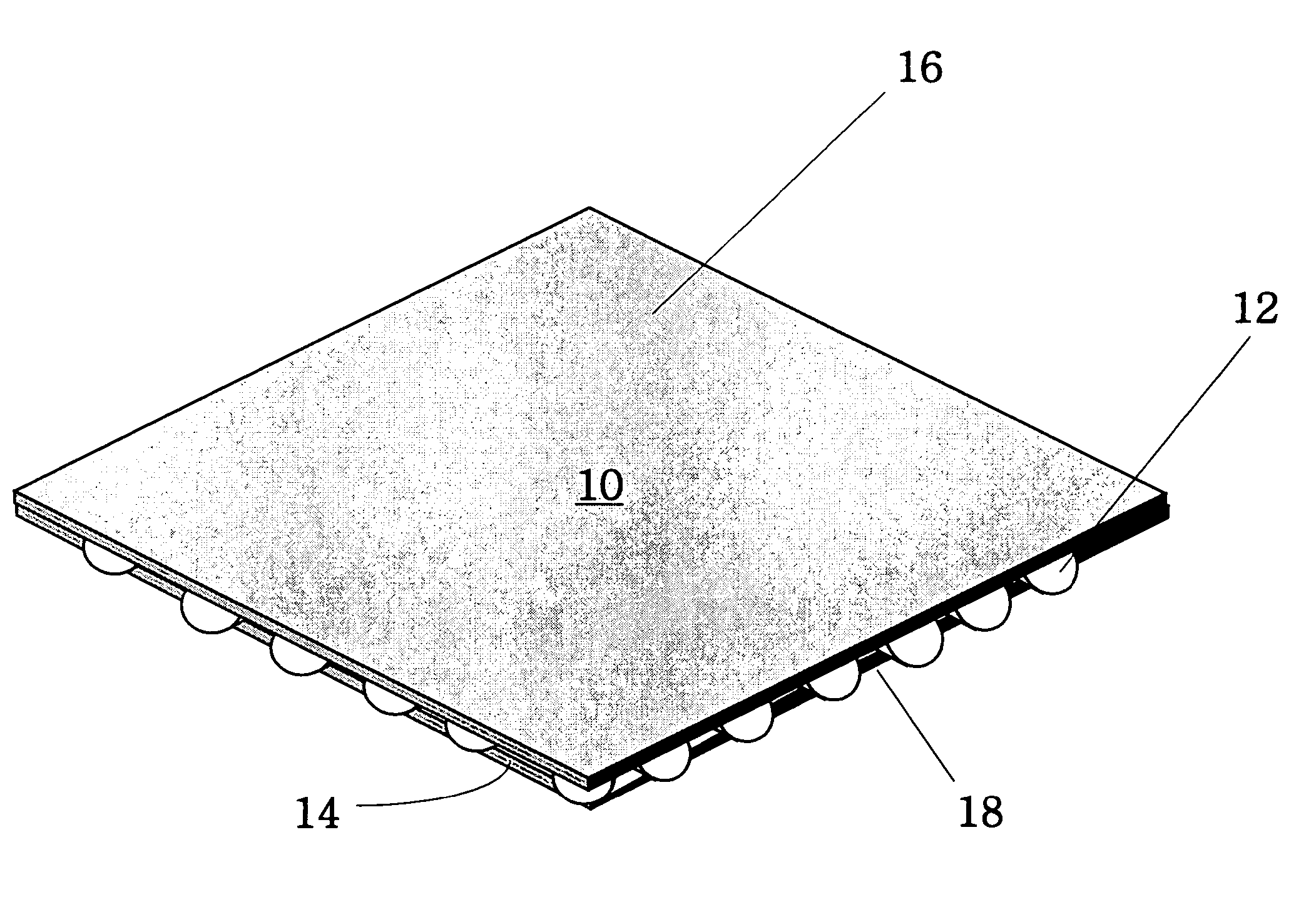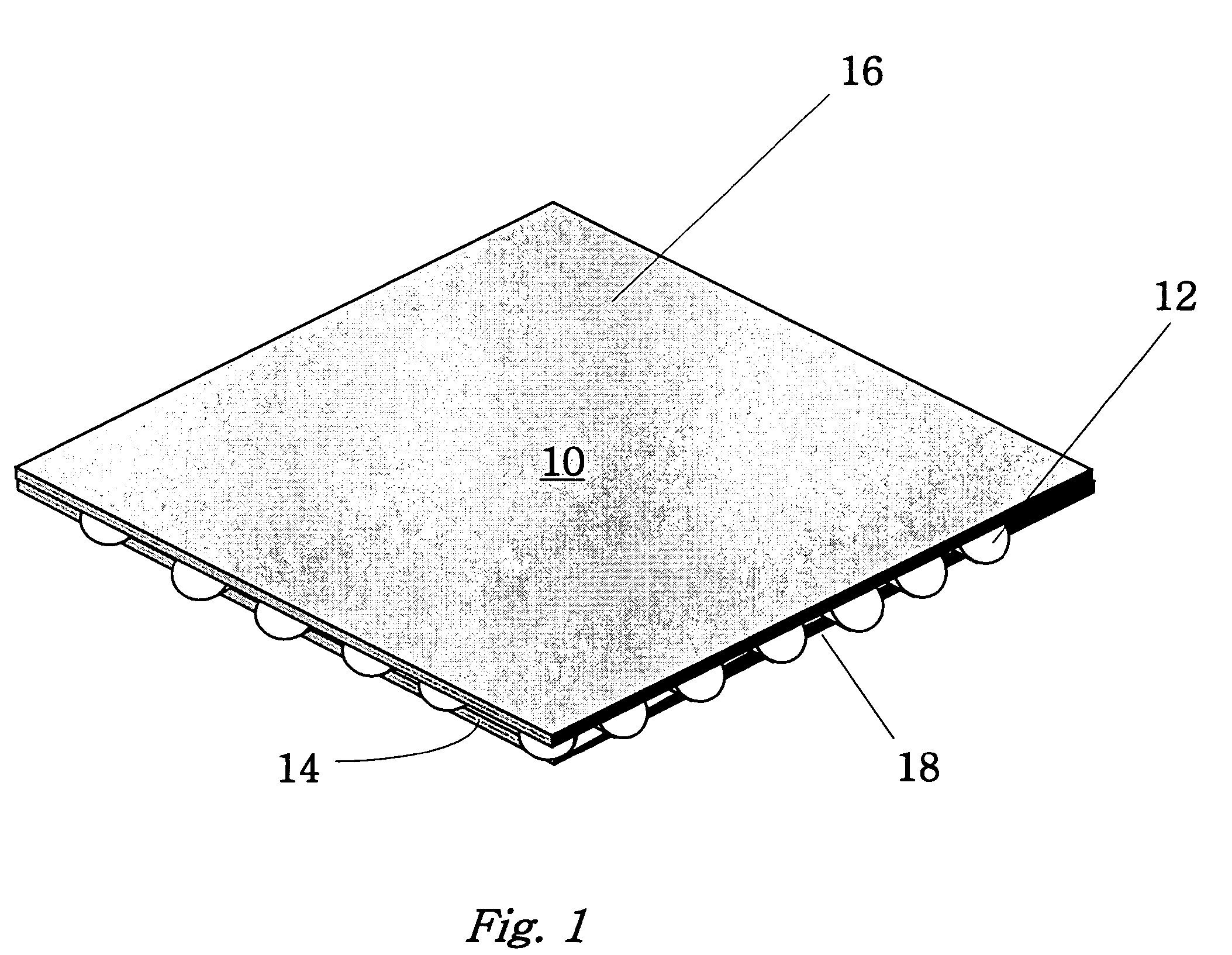Patch repair system for collapsible fuel and water tanks
a fuel and water tank technology, applied in the field of flexible materials, can solve problems such as repair, and achieve the effects of high crystallinity, high elastic and flexible, and increased tensile strength
- Summary
- Abstract
- Description
- Claims
- Application Information
AI Technical Summary
Benefits of technology
Problems solved by technology
Method used
Image
Examples
example 1
[0028]In a twin screw extruder are added 2000 wt. units of Desmomelt 540 (a linear hydroxyl polyurethane adhesive), 200 wt. units of Vestagon BF 1320 (uretdione internally blocked cross-linked) and 12 wt. units of Staboloxol P (carbodiimide-hydrolytic stabilizer). The components are mixed and pelletized.
example 2
[0029]In a twin screw extruder are added 1500 wt. units of Desmomelt 540 (a linear hydroxyl polyurethane adhesive), 150 wt. units of Vestagon BF 1320 (uretdione internally blocked cross-linked isocyanate), 12 wt. units of Staboloxol P (carbodiimide-hydrolytic stabilizer), and 50 wt. units of Primid (N,N,N′,N′-tetrakis(2-hydroxyethyl)adipamide, a cross-link enhancer). The components are mixed and pelletized.
[0030]Prior to extruding the thermoplastic resin (TPU), the TPU is dried. The water content is preferably less than 0.03%. Masterbatches of fillers, colorants, and reinforcing additives are compounded as desired. Nominally, additional antioxidants, UV stabilizers and processing aides are not required. Coating weights are appropriately adjusted for the denier and count of the thread.
[0031]The invention is a method for applying a patch repair system to a damaged area of a collapsible fuel and water tanks and other articles fabricated from a flexible structural fabric coated with a t...
PUM
| Property | Measurement | Unit |
|---|---|---|
| temperatures | aaaaa | aaaaa |
| Vicat softening point | aaaaa | aaaaa |
| water content | aaaaa | aaaaa |
Abstract
Description
Claims
Application Information
 Login to View More
Login to View More - R&D
- Intellectual Property
- Life Sciences
- Materials
- Tech Scout
- Unparalleled Data Quality
- Higher Quality Content
- 60% Fewer Hallucinations
Browse by: Latest US Patents, China's latest patents, Technical Efficacy Thesaurus, Application Domain, Technology Topic, Popular Technical Reports.
© 2025 PatSnap. All rights reserved.Legal|Privacy policy|Modern Slavery Act Transparency Statement|Sitemap|About US| Contact US: help@patsnap.com



